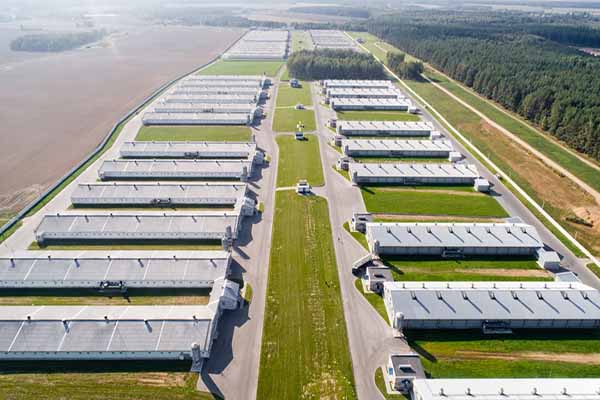Long-Term Cost Analysis of Automation Equipment in Uganda’s Chicken Farms
Time : 2025-06-29
In recent years, the poultry industry in Uganda has seen significant growth, with chicken farming becoming a key component of the country’s agricultural sector. Automation has played a pivotal role in this growth, especially with the integration of advanced equipment in chicken farms. This article delves into a long-term cost analysis of automation equipment in Uganda’s chicken farms, considering various factors that contribute to the overall profitability of such installations.
—
Introduction to Chicken Farm Automation
Automation in chicken farming refers to the use of technology to streamline processes, enhance efficiency, and improve the overall health and welfare of the chickens. In Uganda, where the poultry industry is rapidly expanding, the adoption of automation equipment has become increasingly common. This section provides an overview of the types of automation equipment commonly used in chicken farms and their potential benefits.
Types of Automation Equipment Used in Uganda’s Chicken Farms
The automation equipment used in Uganda’s chicken farms can be categorized into several key areas:
- Feeding Systems: These systems automate the feeding process, ensuring that chickens receive the correct amount of feed at the right time. They can include automated feeders, feed dispensers, and automated feeding stations.
- Watering Systems: Similar to feeding systems, watering systems ensure consistent access to clean water, which is crucial for the health of the chickens.
- Environmental Control Systems: These systems manage the temperature, humidity, and air quality in chicken houses, creating an optimal environment for the chickens.
- Health Monitoring Systems: These systems use sensors and cameras to monitor the health and behavior of the chickens, allowing for early detection of any issues.
- Manure Management Systems: These systems automate the collection and disposal of manure, which is an essential aspect of biosecurity and environmental sustainability.
Each of these systems contributes to the overall efficiency and productivity of the farm, but they also come with a price tag.
Initial Costs of Automation Equipment
The initial costs of automation equipment can be significant. High-quality feeding systems, environmental control units, and health monitoring devices can range from a few thousand to tens of thousands of dollars. For small-scale chicken farms, these costs can be prohibitive, but for larger operations, the benefits often outweigh the initial investment.
Operational Costs and Efficiency Gains
While the initial costs are substantial, the operational costs and efficiency gains provided by automation can be substantial as well. Here’s a breakdown:
- Energy Savings: Automation systems can optimize energy usage, leading to significant savings on electricity and fuel costs.
- Reduction in Labor Costs: With automated systems, fewer workers are needed to manage the daily operations of the farm.
- Improved Production and Health: Automation can lead to higher production rates and better chicken health, reducing mortality and enhancing overall yield.
- Reduced Waste: Automated systems can minimize feed and water waste, leading to cost savings and environmental benefits.
To assess the long-term cost-effectiveness of automation, it’s essential to consider these operational savings alongside the initial investment.
Long-Term Cost Analysis
Performing a long-term cost analysis involves considering the following factors:
- Return on Investment (ROI): The expected ROI can be calculated by dividing the total cost of the automation system by the total savings over the expected lifespan of the equipment.
- Lifespan of Equipment: The lifespan of automation equipment can vary, but most systems are designed to last between 10 to 15 years.
- Inflation and Interest Rates: These factors should be taken into account when estimating the future value of costs and savings.
- Repairs and Maintenance: While automation equipment is generally low-maintenance, there will be costs associated with repairs and regular maintenance.
A comprehensive analysis would involve forecasting these costs and savings over the expected lifespan of the equipment, providing a clear picture of the financial implications of automation.
Conclusion
Automation equipment in Uganda’s chicken farms offers a range of benefits that can significantly impact the long-term profitability of operations. While the initial costs are substantial, the efficiency gains, operational savings, and improved production yields can make the investment worthwhile. Conducting a thorough long-term cost analysis is crucial for making informed decisions about automation in the poultry industry.












